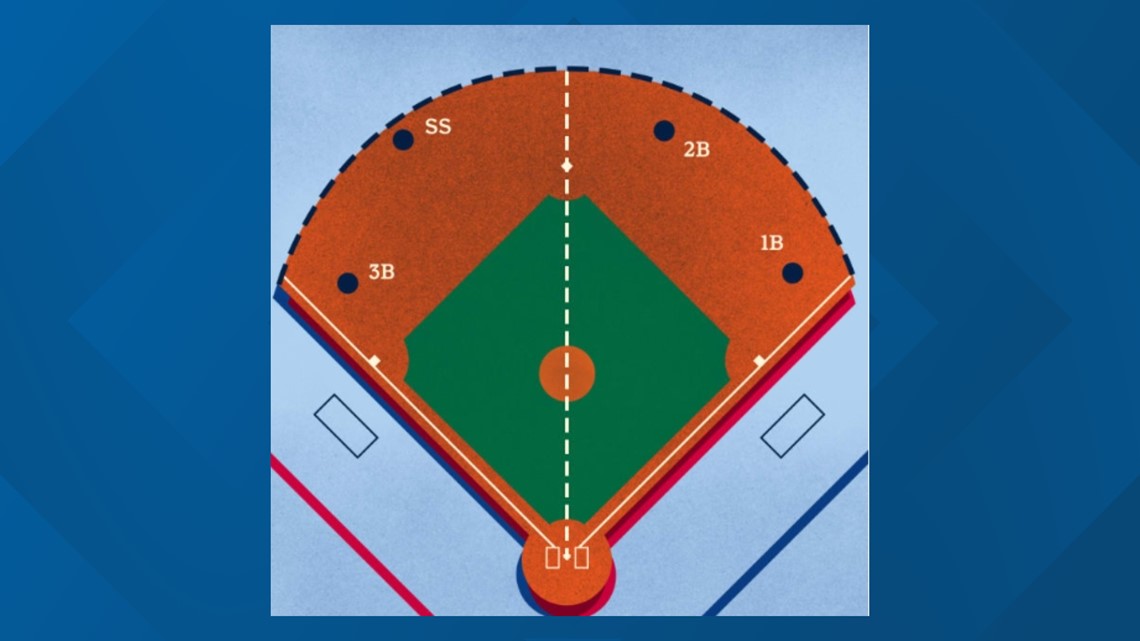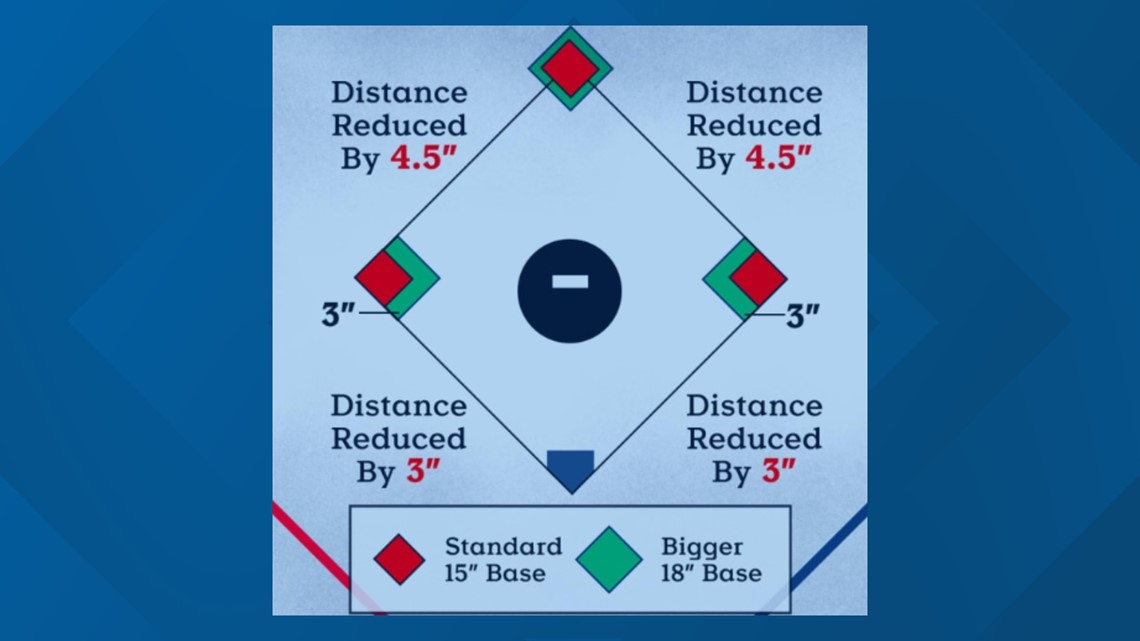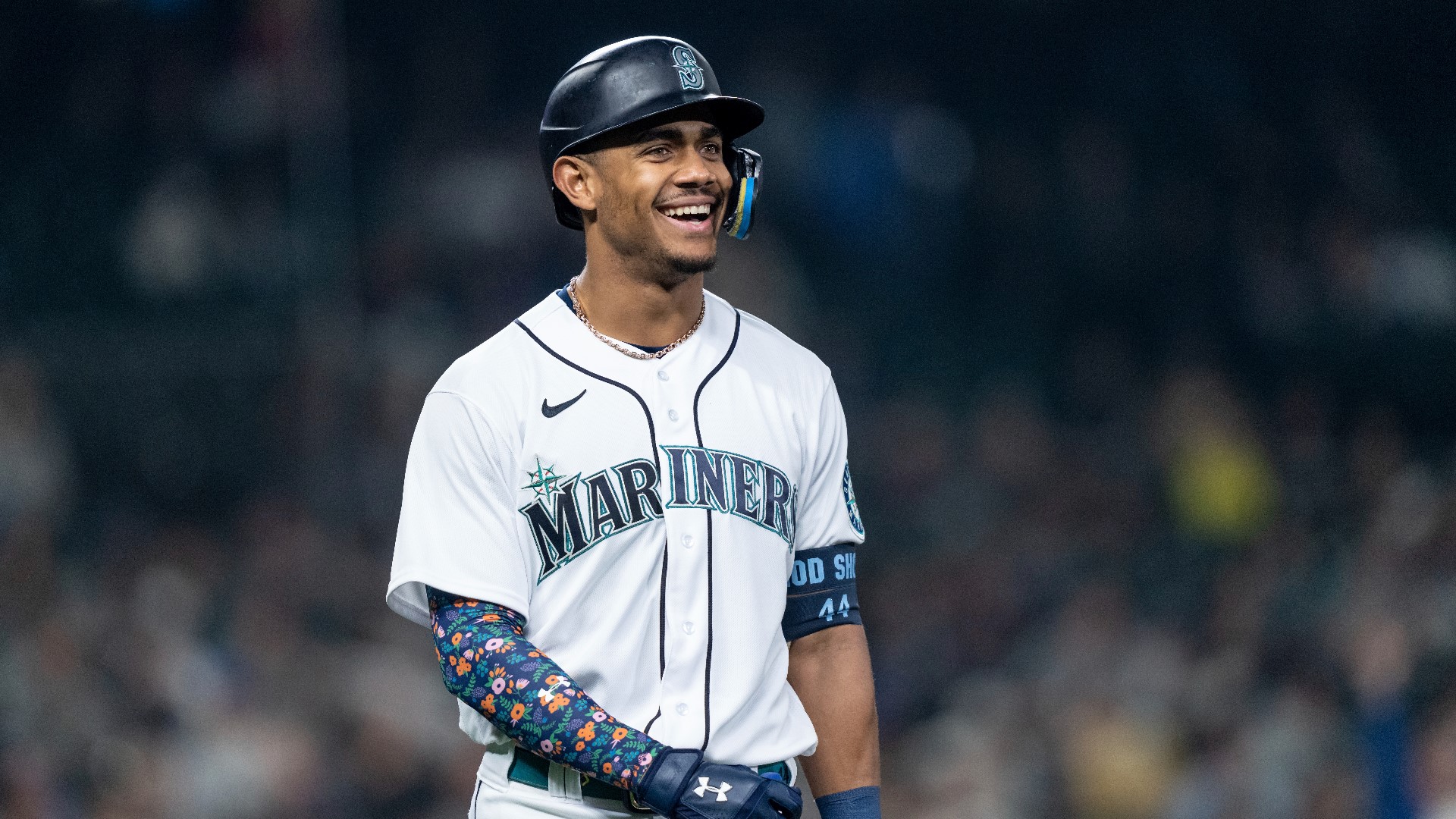SEATTLE — Better pace of play, more time spent with the baseball in play and more action on the bases were the primary goals of Major League Baseball's (MLB) sweeping rule changes for the 2023 season (and beyond).
Yes, a sport that typically prefers to never change is making not one, not two, but three big changes to its rules in one offseason.
If it sounds overwhelming, we are here to break down each rule change, why it's happening and how it will affect the Seattle Mariners.
MLB's change: Pitch clock and limited pickoffs
What is the rule? Effective immediately, pitchers will have 15 seconds to begin their throwing motion once the catcher returns the baseball to them. Pitchers will have 20 seconds between pitches if there is a runner(s) on base.
At the same time, the hitter must be in the batting box “and alert to the pitcher” with eight seconds left on the pitch clock. Violations will result in a ball if a pitcher is at fault or a strike if the batter is at fault.
At the same time, pitchers will only be allowed two "disengagements" (pickoff attempts or step-offs) from the mound per batter. These violations will be considered a balk.
Why did MLB change these rules? "Less waiting and more action," MLB said in a tweet outlining its rule changes. The pitch timer helped reduce game long by 25 minutes in the minor leagues last season, according to MLB.
MLB added that limiting pickoffs led to a 26% increase in stolen base attempts in the minor leagues.
These two tradeoffs play into MLB's "less waiting and more action" ethos.
How will this affect the Mariners?
Mariners pitchers will need to adjust, and quickly, to adhere to this rule. Only one pitcher on the staff currently, Luis Castillo, had a tempo of fewer than 15 seconds with the bases empty in 2022, according to Baseball Savant's Statcast tracking. No Mariners pitcher had a tempo of fewer than 20 seconds with runners on base -- these are the marks each pitcher will have to reach in 2023 to avoid countless violations.
Just for reference, here is how Mariners pitchers fared in tempo with the bases empty in 2022. Remember, the pitch clock will be 15 seconds in this case.
- Luis Castillo: 14.7 seconds
- Logan Gilbert: 15.2 seconds
- Marco Gonzales: 15.3 seconds
- George Kirby: 16.5 seconds
- Matt Brash: 17.3 seconds
- Chris Flexen: 17.5 seconds
- Robbie Ray: 18.5 seconds
- Erik Swanson: 19.4 seconds
- Matt Festa: 19.5 seconds
- Penn Murfee: 19.7 seconds
- Diego Castillo: 20.1 seconds
- Paul Sewald: 21.5 seconds
- Andres Munoz: 21.6 seconds
And here's how quickly Mariners pitchers were in 2022 with runners on base. Pitchers will have 20 seconds to deliver the ball this season. Gonzales was the only pitcher on the staff marginally close to achieving that standard.
- Marco Gonzales: 20.2 seconds
- Logan Gilbert: 21.1 seconds
- Matt Brash: 21.9 seconds
- Erik Swanson: 21.9 seconds
- Matt Festa: 22.3 seconds
- Chris Flexen: 23.1 seconds
- Diego Castillo: 23.2 seconds
- Robbie Ray: 23.6 seconds
- Luis Castillo: 23.8 seconds
- Penn Murfee: 24.4 seconds
- Paul Sewald: 24.5 seconds
- George Kirby: 25.4 seconds
- Andres Munoz: 25.5 seconds
There will surely be growing pains with the pitching clock for all teams, but the Mariners staff needs a lot of help to trim down its pace.
MLB's change: Shift restrictions
What is the rule? Two infielders must be positioned on either side of second base when the pitch is released and four infielders must have both feet within the infielder when the pitcher is on the rubber.
One important caveat: If a shortstop started sprinting towards second base, crossing it as the pitch is delivered, it won't be deemed legal because it's considered a way to skirt the shift ban.
The shift ban does present the possibility of a "two-man outfield," with a center fielder and right fielder, along with a left fielder set up where the infielders used to be prior to the shift ban. If the two-man outfielder becomes popular in 2023, however, MLB could opt to ban that in future seasons.


Why did MLB change this rule? MLB said shift restrictions increased batting average and decreased strikeouts in the minor leagues, "giving players more opportunity to show off their athleticism."
How will this affect the Mariners? The shift ban will likely favor left-handed hitters that hit a lot of grounders and pull the ball. Outs that were grounded into the shift in previous years could turn into hits this season, leading to a higher batting average.
J.P. Crawford (34.2 pull%) could see a slight uptick in batting average with the shift ban.
MLB's change: Bigger bases
What is the rule? MLB increased the size of the first, second and third bases from 15 inches to 18 inches. The distance from home to first base was decreased by three inches and the distance from third base to home was also decreased by three inches. Bigger bases mean the distance from first base to second base will be shortened by 4.5 inches and the distance from second to third base will be decreased by 4.5 inches


Why did MLB change this rule? MLB said the bigger bases will have a positive impact on player safety. Injury events near the bases dropped by 13% in the minor leagues last year, according to MLB.
How will this affect the Mariners? Another tradeoff of bigger bases is that it will, theoretically, lead to more players trying to steal bases. That is music to Julio Rodriguez's ears. As a rookie, Rodriguez stole 25 bases in 2022 and flashed prodigious speed that put him in the 98th percentile in sprint speed, according to Baseball Savant. Rodriguez is the perfect player to take advantage of the bigger bases in 2023, meaning 35 stolen bases or more in a season is well within reason for the 22-year-old phenom.

